Replanting Properly Is Critical To Ensuring Your Succulents Thrive
Many times new succulent growers don't realize that repotting their succulents can benefit their plants. At the same time, they don't know how to properly repot succulents to help the roots flourish, allowing the plant to grow easily. While replanting a succulent may seem as easy as moving it from one pot to another and adding a little soil, there are several critical steps that can kill your succulent if not properly followed. This step-by-step photo tutorial for planting newly purchased succulents will help give you a good foundation for your next succulent garden.
Essential Supplies
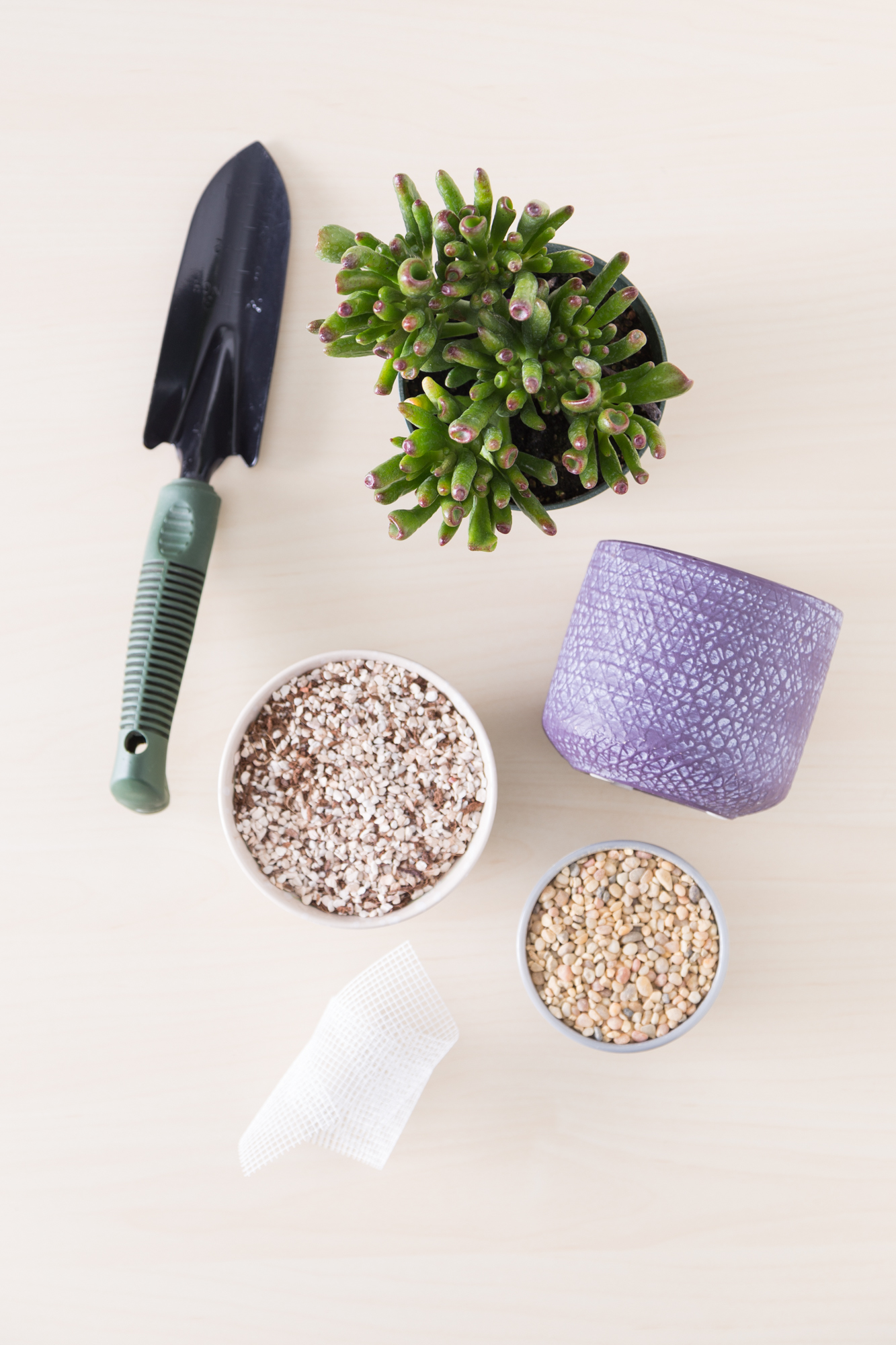
Before you get started, make sure you have the essential supplies for planting succulents. You don't need a lot, but this list will ensure you're not running for tools in the middle of replanting.
- Soil
- Succulents
- Planter
- Mesh Screen
- Top dressing
- Scoop or shovel
Once you've gathered the supplies you need, you're ready to start potting!
When to repot succulents
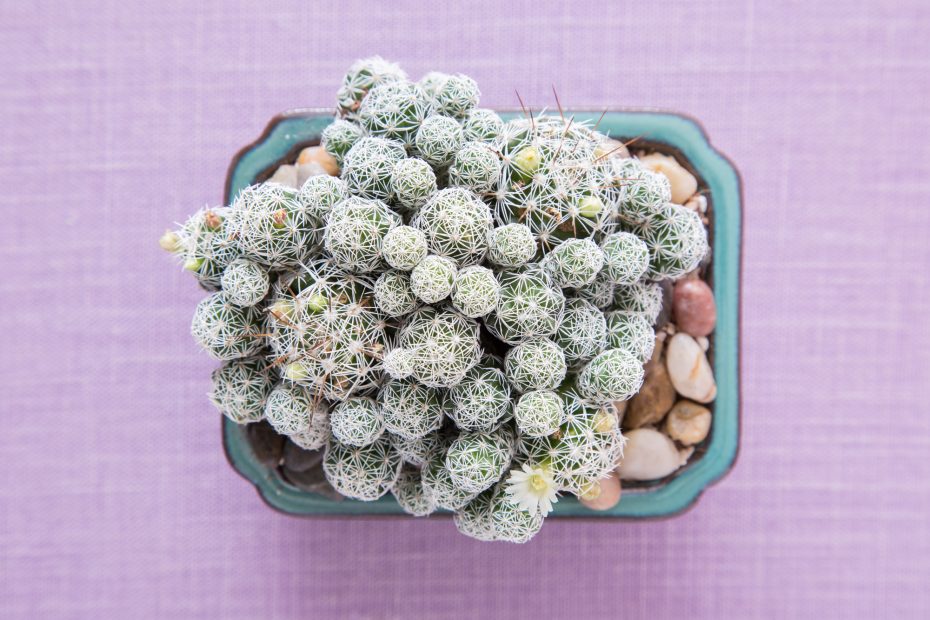
There are various times it's necessary to repot your succulents. The first is right after you buy them. A lot of times nurseries will grow succulents in very organic soil that doesn't drain well.
This works ok in the nursery where the climate is controlled but generally doesn't work well once you bring your succulents home. It's best to repot succulents into fresh soil after you purchase them.
Another time you'd want to repot your succulents is when they've filled up or outgrown the pot they're in. Often they'll be "root bound" meaning the roots are filling up the pot and the plant doesn't have space to grow more roots.
It's very common for succulents from a nursery to be root bound as it can help reduce the speed at which succulents grow, meaning the nursery doesn't have to repot their succulents as often.
As a general rule, I recommend leaving about 1/2" to 1" (1-2.5cm) between the edge of the pot and your succulent's leaves. If your succulent is about 3" (7.5cm) in diameter, then you'll want to place it in a pot that's about 4" (10cm) in diameter.
Remove Your Pot and Soil
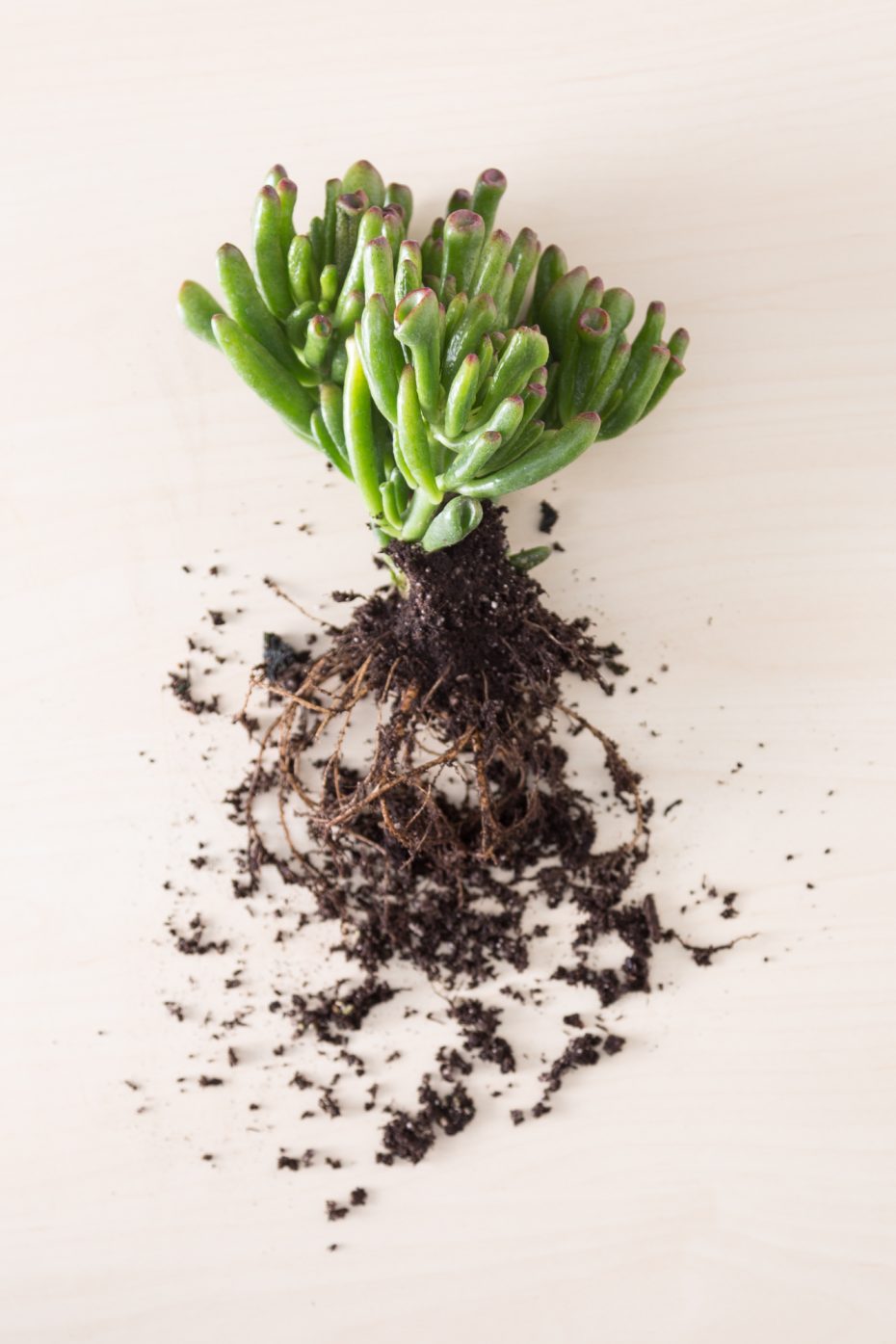
The first step of successful succulent planting is to get rid of the nursery pot and remove as much soil as you can. Nurseries almost always plant their succulents in soil that's way too dense and retains too much water. The more of this nursery soil you're able to get rid of, the healthier your succulent's roots will be.
You may not be able to get all the soil off without damaging the roots, and that's totally fine. Just get rid of as much as you can while being gentle on your succulent.
If you're planting your succulent by itself (as I am here), you'll want to leave the roots intact as much as possible. On the other hand, if you're putting together an arrangement with several succulents, you might want to break off some of the roots.
Getting rid of some roots won't create any big problems–your succulent will survive just fine either way. And, if you're lucky enough to have babies attached to your main plant, now is a good time to remove them if you'd like.
Place Mesh Over the Drainage Hole
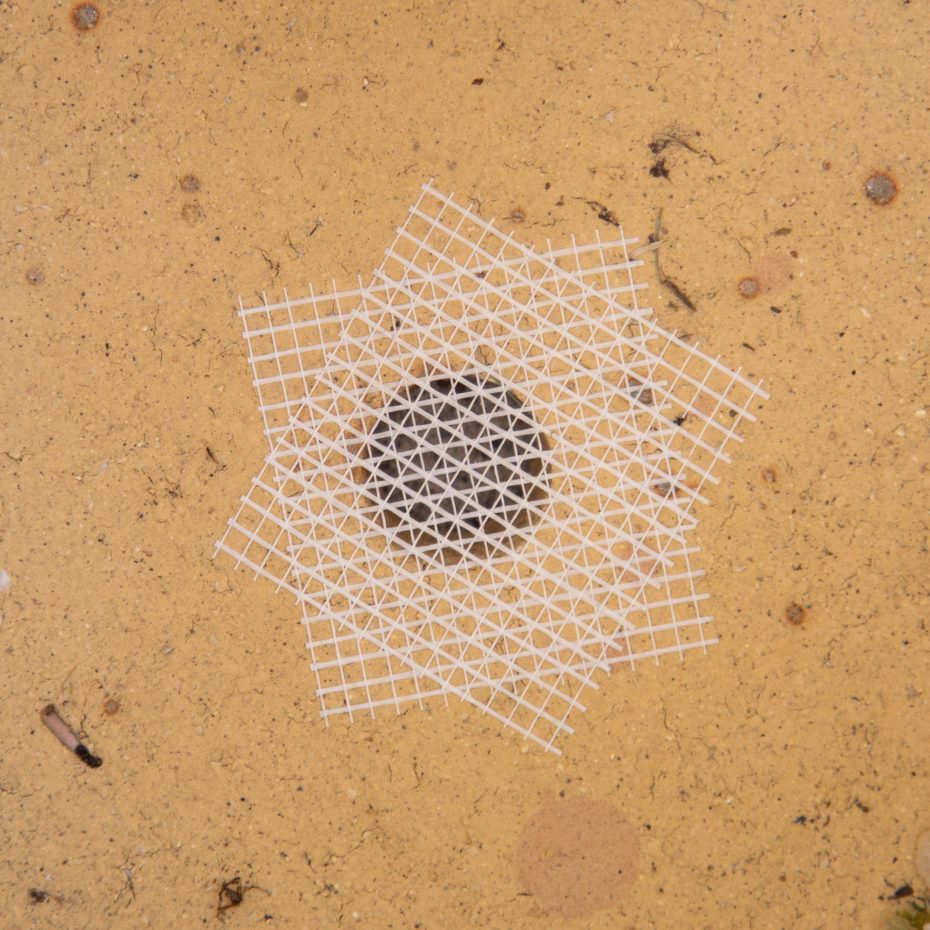
Although a drainage hole is important for the health of your succulent, you don't want your soil to fall out of it. Use some mesh tape to prevent the biggest chunks of soil from falling out.
Mesh tape works well because it allows for water to flow out easily, but will still hold in most of the soil. You'll probably get some “dust” falling out, but that's normal.
If you want, you can also use a mesh screen instead of the mesh tape.
Fill Your Pot Part Way With Soil
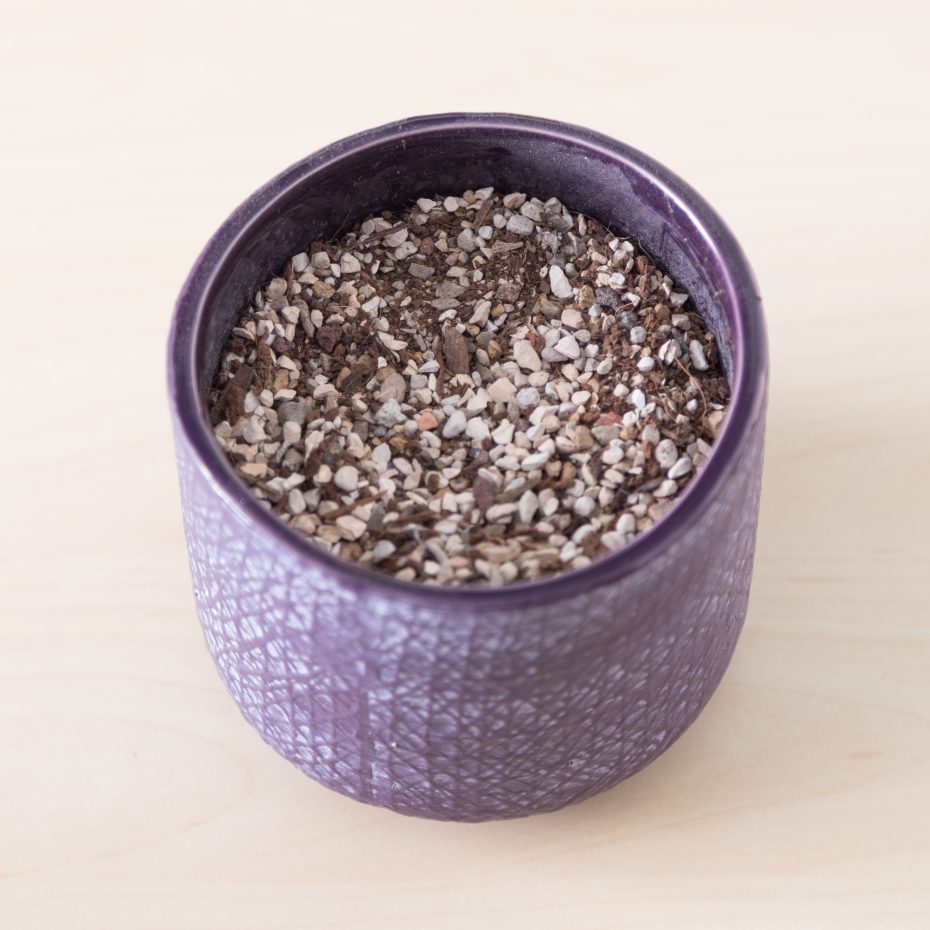
Before you place your succulent in the pot you've chosen, fill it with succulent soil. Leave enough room on top so the roots of your succulent will be covered but the leaves will stay above the rim of the pot. You'll be adding more soil later on.
Place Your Succulent
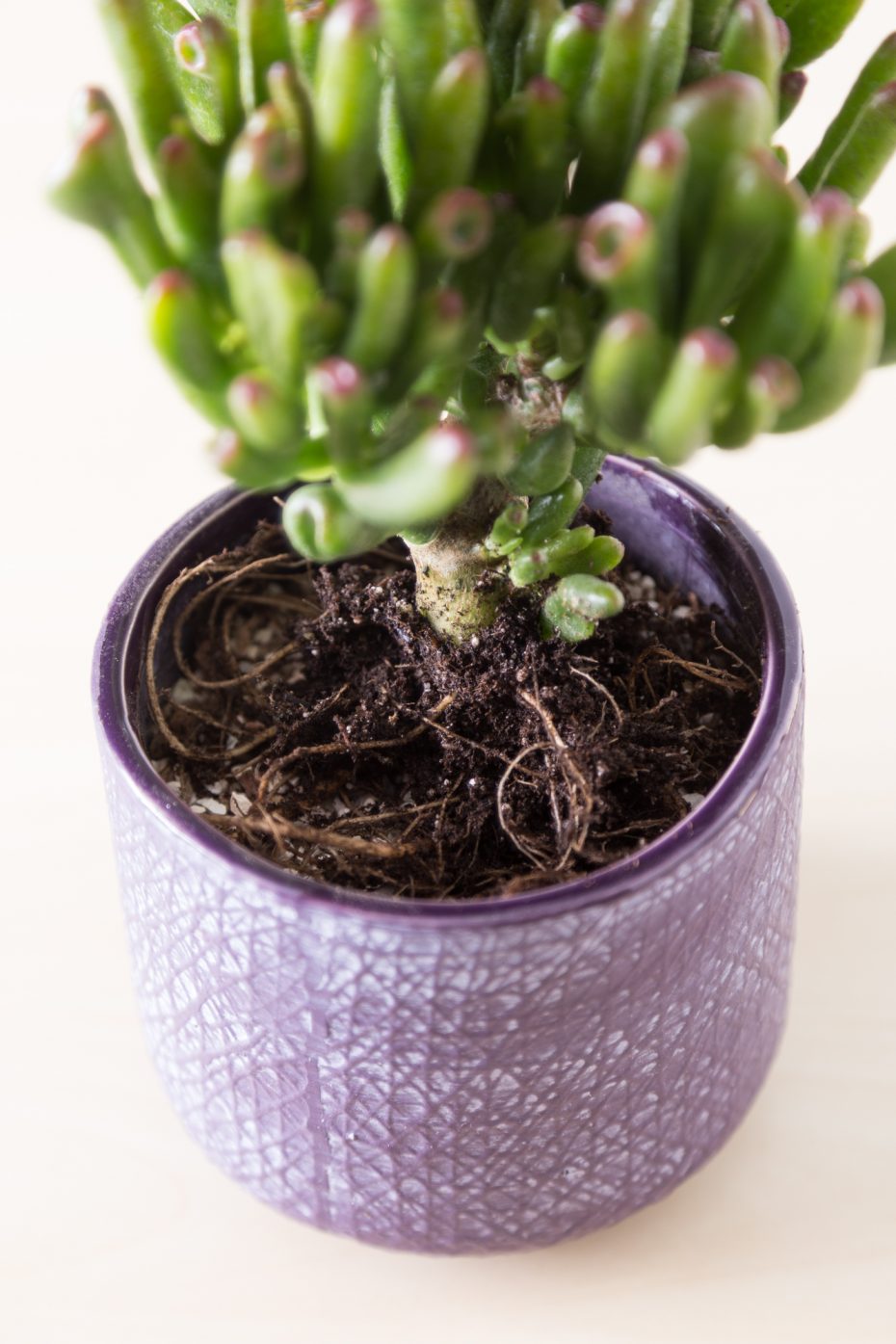
Now it's time to add your succulent to the planter! You can plant it–centered or off-center, whichever you'd like.
Nestle some of the roots into the soil, so they'll get a bit of a head start on growth.
Fill the Pot All the Way to the Top
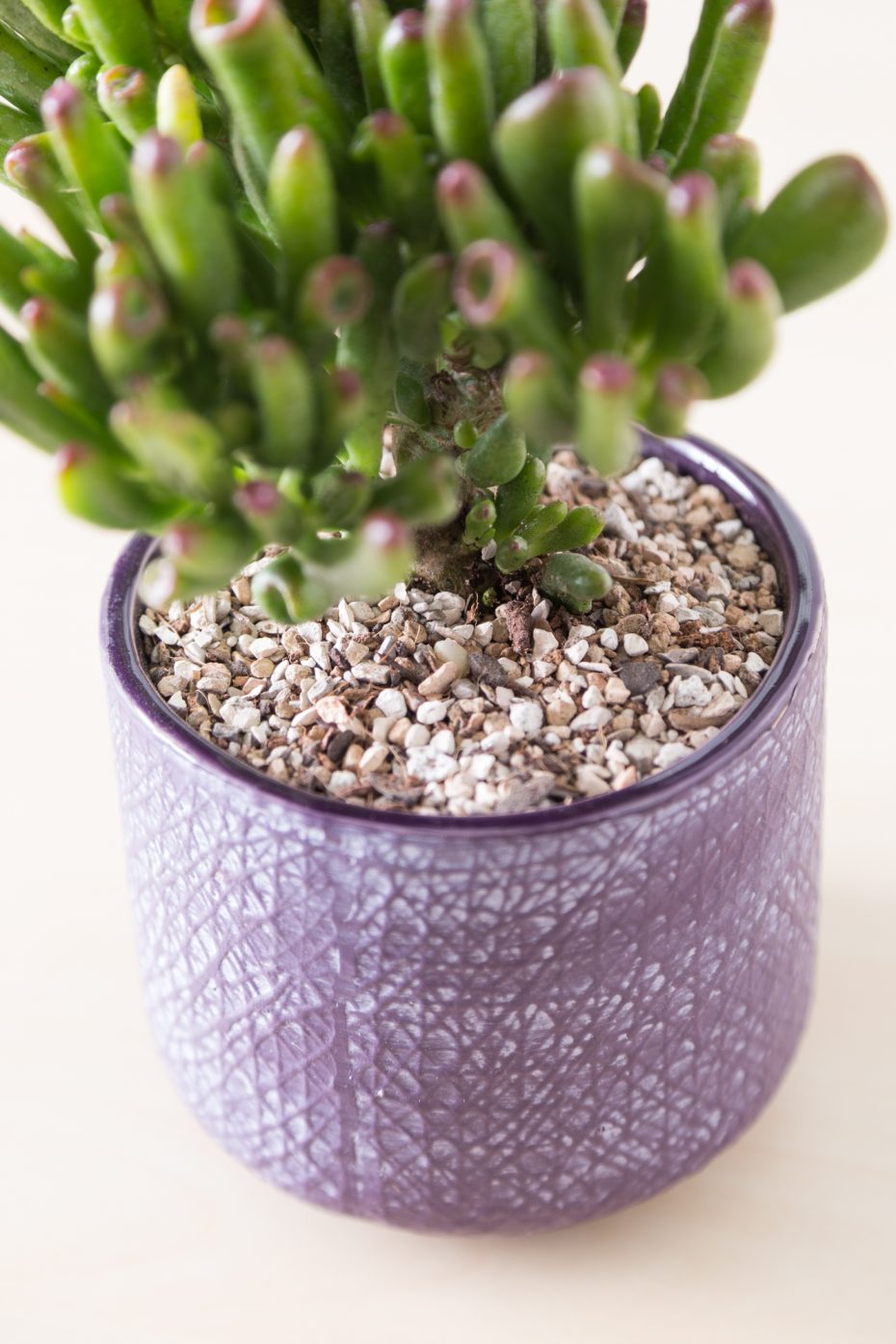
Now it's time to fill up the pot. You want to leave just a tiny bit of room between the top of the soil and the top of the pot. Make sure the leaves of the succulent sit completely above the soil, to prevent rotting.
A chopstick is great for poking your soil over and over, which will help remove any large pockets of air between the roots.
This will help prevent your soil from sinking after a few waterings.
Add a Top Dressing
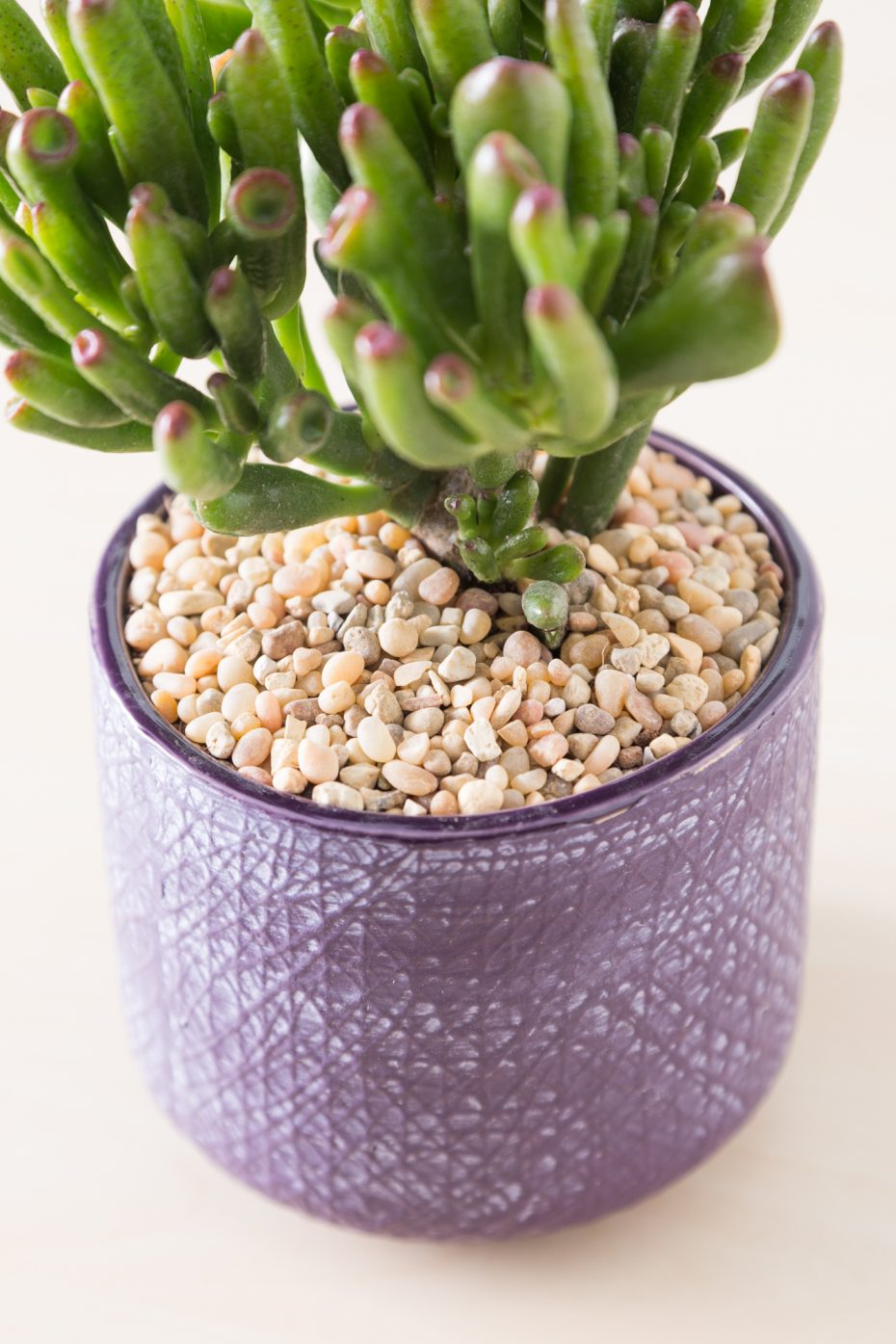
To finish off your potted succulent, add a top dressing. This is why you left a little bit of room at the top of your pot.
The top dressing can be something bright and fun or a simple gravel like I used here. As you add your top dressing, press down on the soil to help the succulent stay in place.
Most Important Step
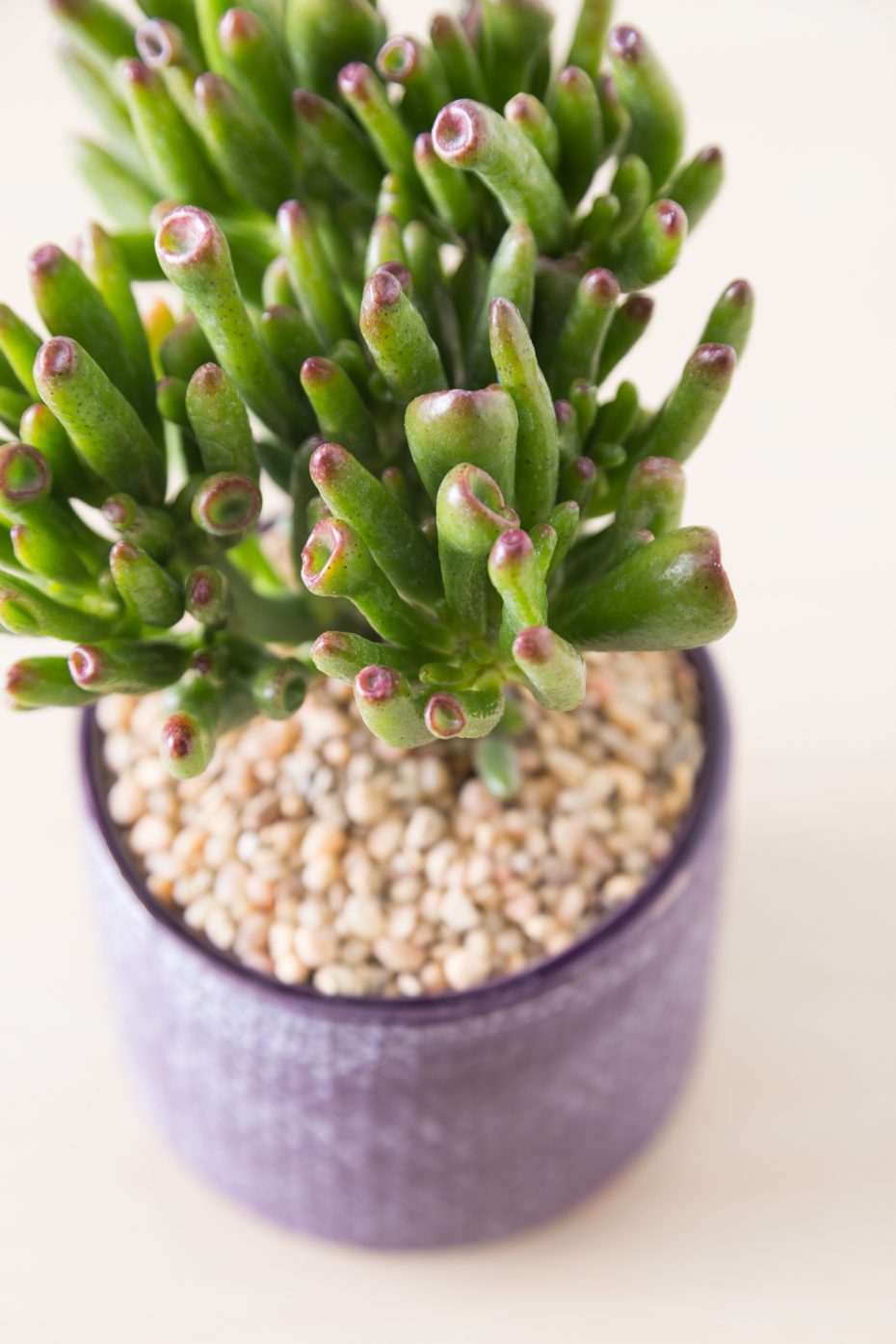
Once your succulent is potted and the top dressing is in place, let it sit for one to two days before you water it. This resting period will give the roots time to heal before they start soaking up water, which helps prevent root rot.
The most common mistakes I see in potting are not removing the soil from the roots, forgetting to add a top dressing, and watering too soon.
Stop the stretching: How to fix one of the most common succulent problems
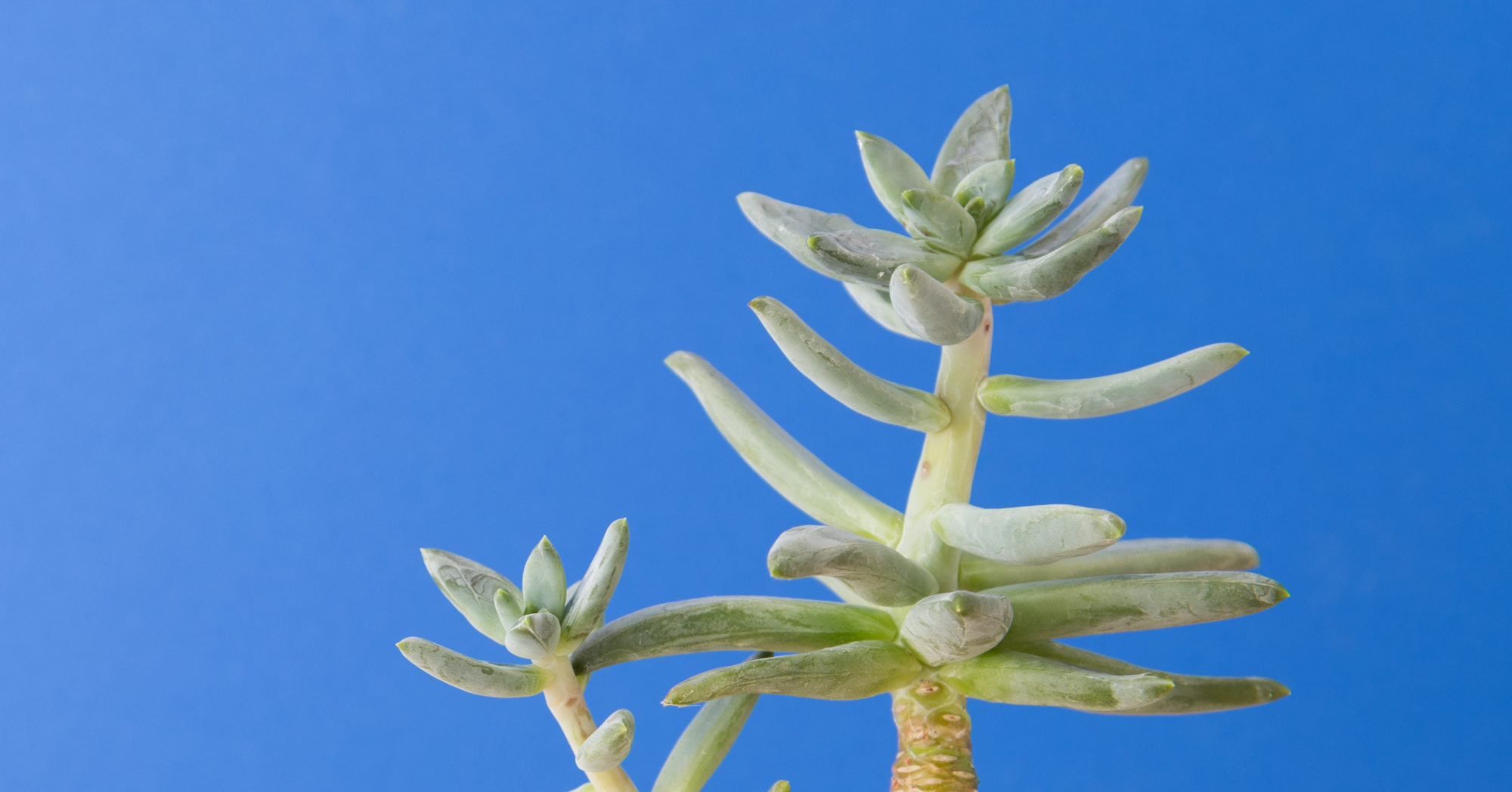
If you're growing succulents inside, you might notice they start to lose their color, get more space between their leaves and begin to look more thin and weak. Succulents that start to get tall like this aren't as healthy as they should be and can eventually end up with more problems. Learn how to stop your succulent from stretching so it can grow healthy and strong.
Get more succulents for free with this simple propagation technique
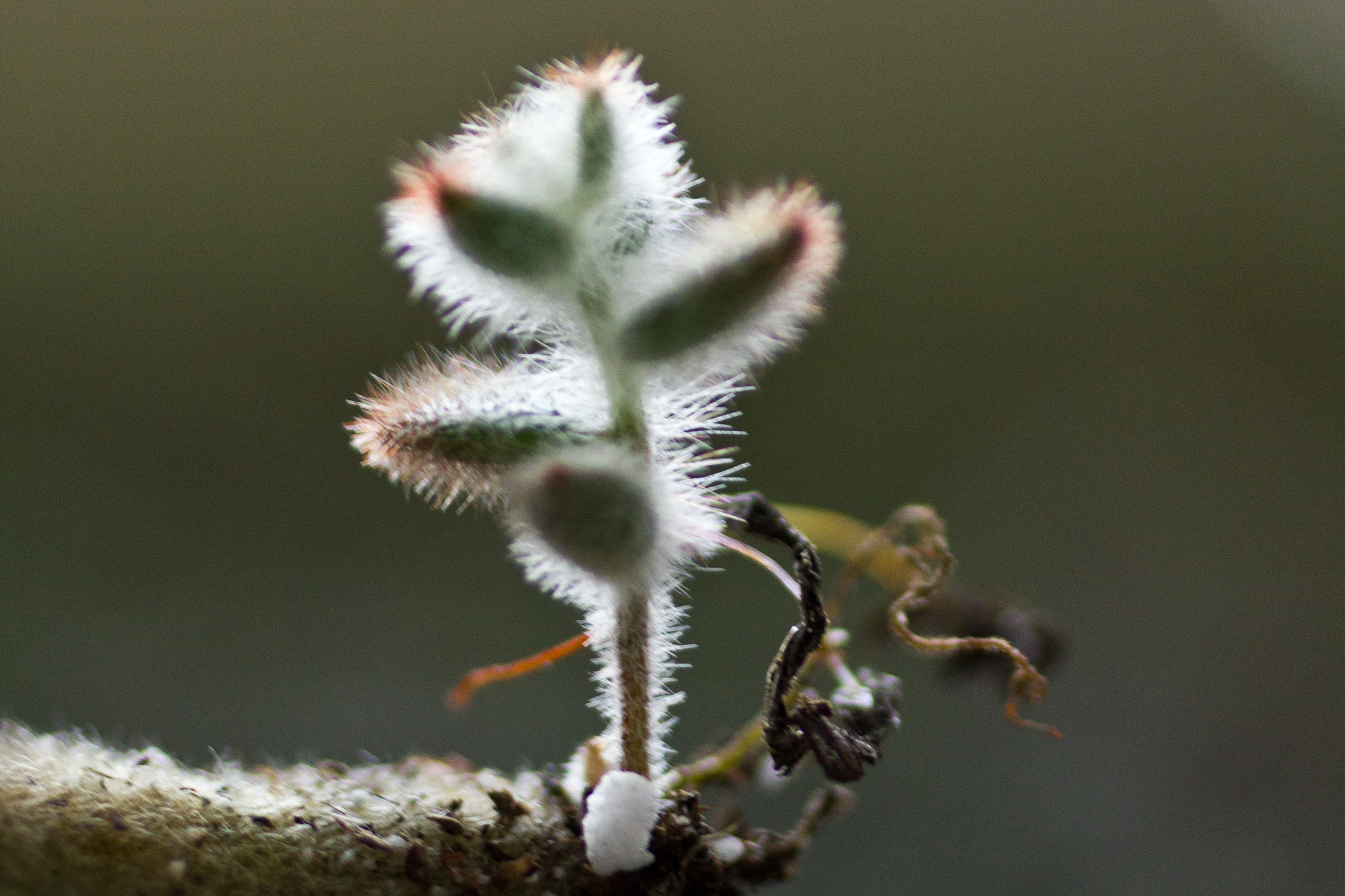
One of the best things about growing succulents is how easily they propagate (grow new baby plants). Propagating succulents from leaves is extremely fun and a rewarding way to get more plants without having to buy new ones. Learning this simple technique can be quite addicting but may help keep your plant budget on track.
Yes, Your Succulent Is Probably Dying, But Here's What To Do About It
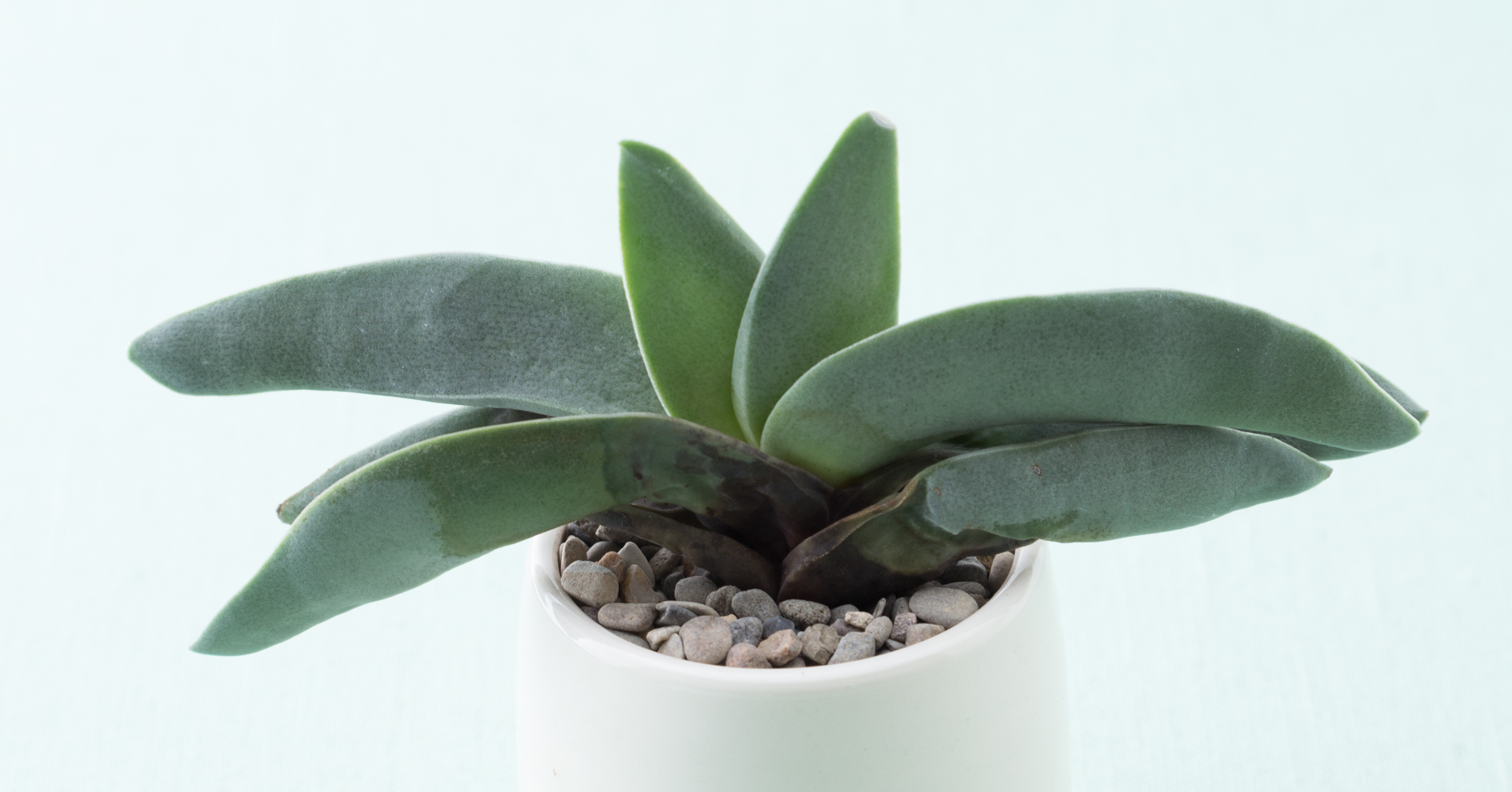
There are a number of reasons your succulent might not be looking great. Find out how to tell what's wrong with your succulent and how you can fix it or prevent it from happening again.
Expert Tips for Creating Stunning Succulent Arrangements
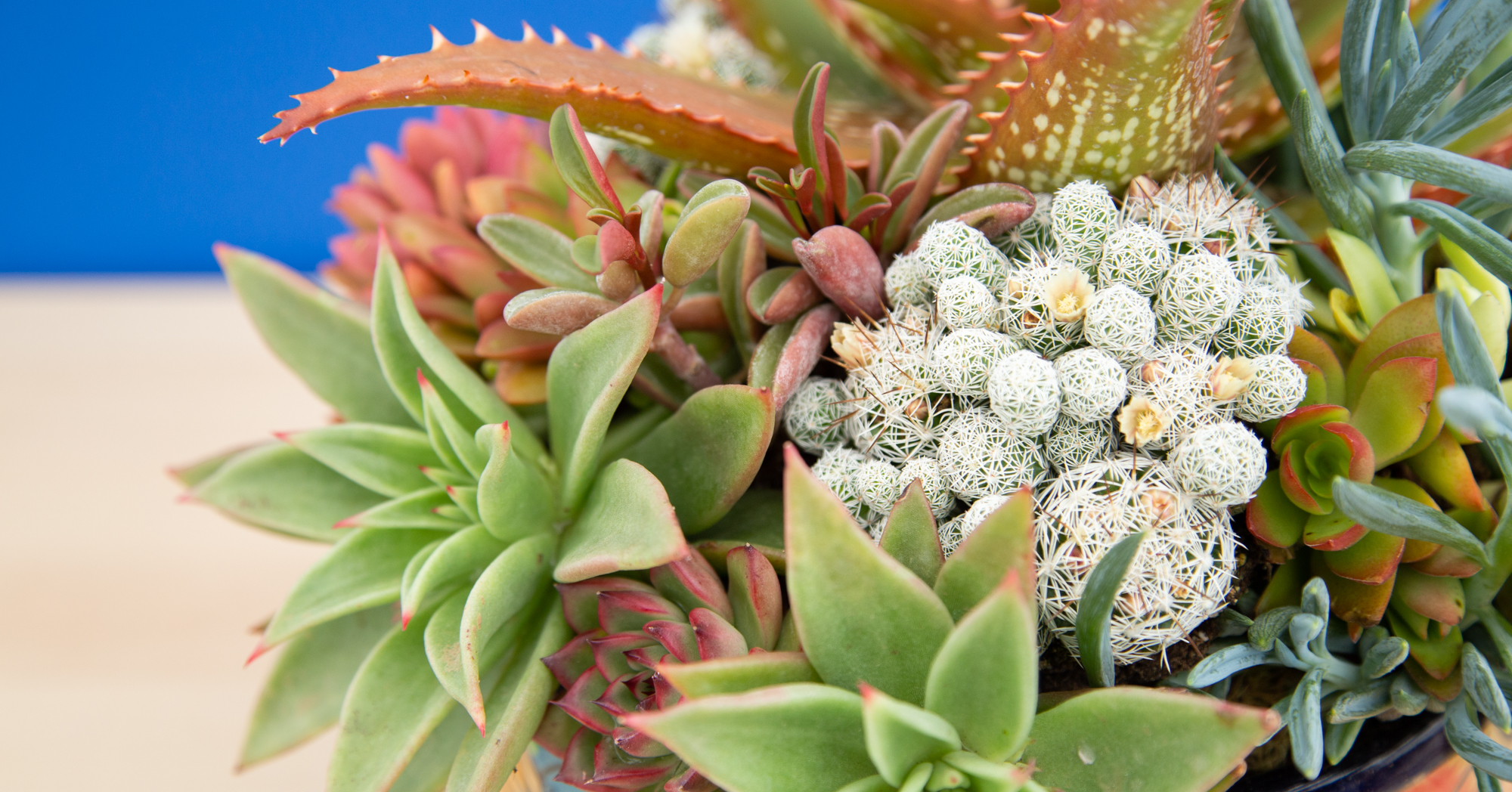
Figuring out which succulents to combine together to make a beautiful arrangement can be daunting. But with these tips from succulent design experts, you'll be able to put together crowd-pleasing arrangements easily, whether it's in pots or in the ground.
Has Your Succulent Lost Its Color?
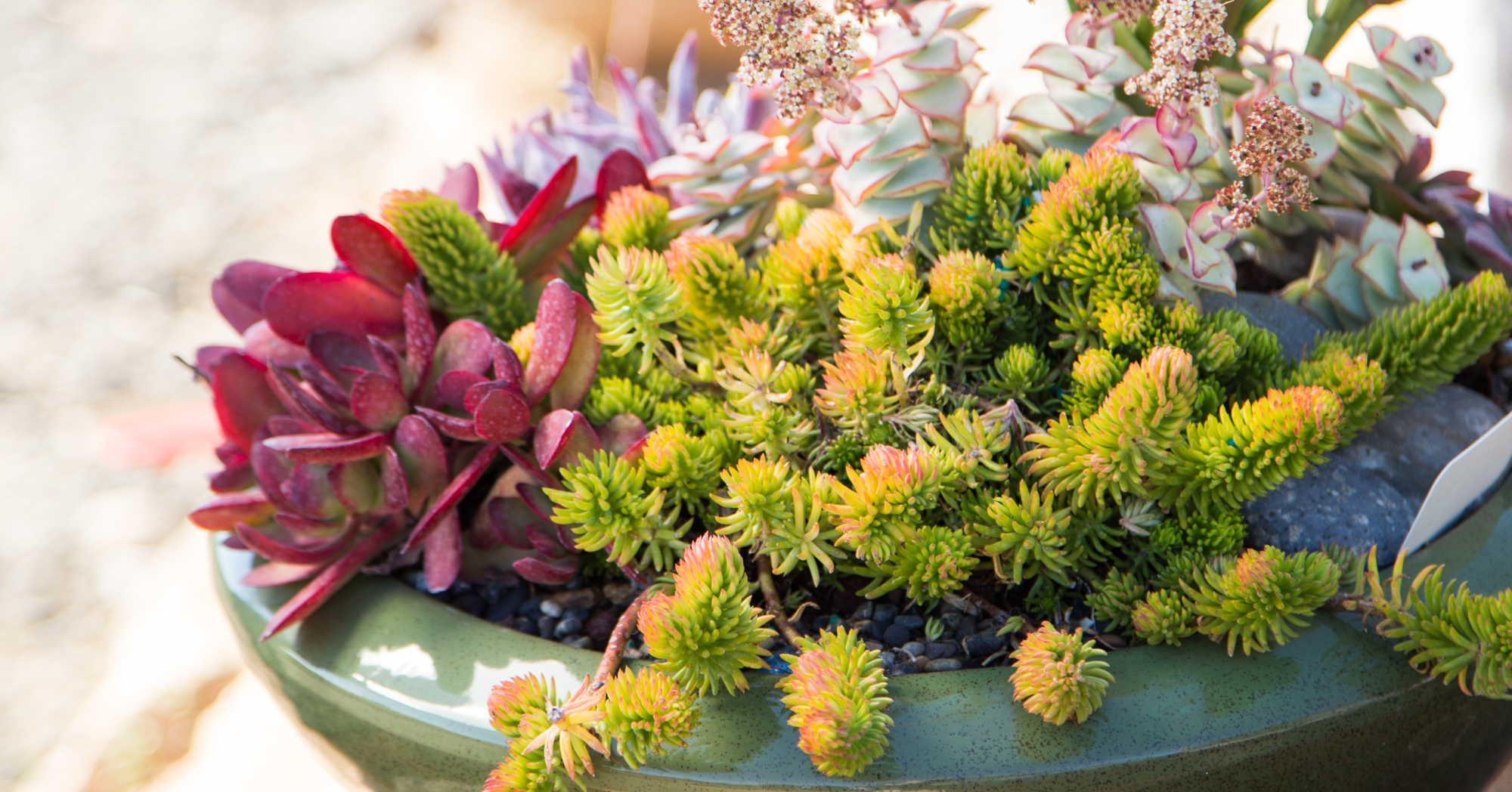
The succulents in this list can all tolerate low light. But most colorful succulents won't fare so well. There are a number of factors that help keep your succulents colorful, including how much light they get. Even some of these "low light" succulents will look a little better with more light. Find out how to give your succulents healthy stress and bring out their brightest colors.
This article originally appeared on Succulents and Sunshine.